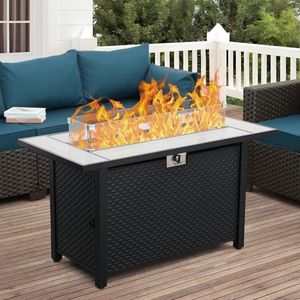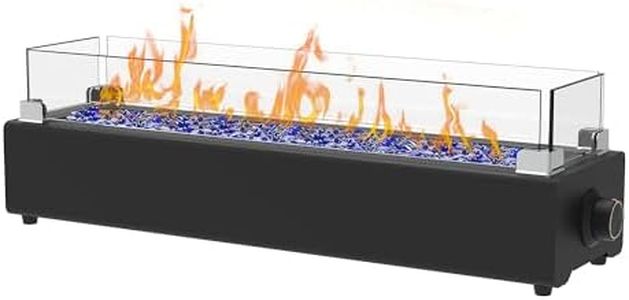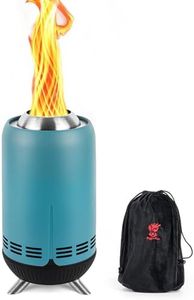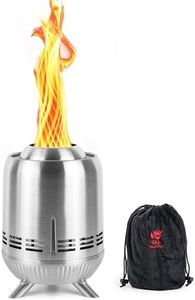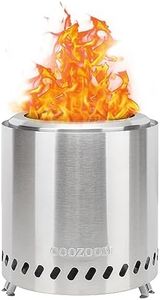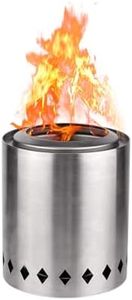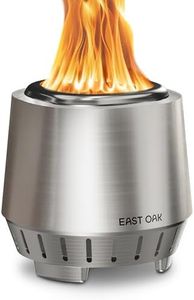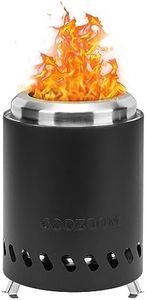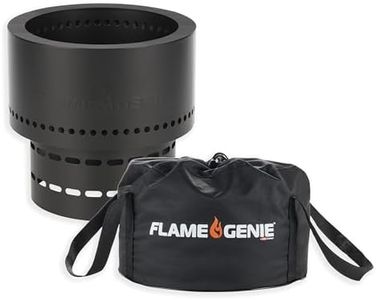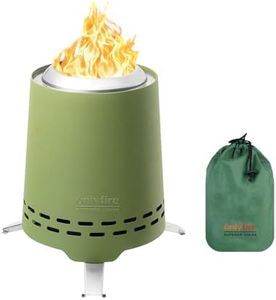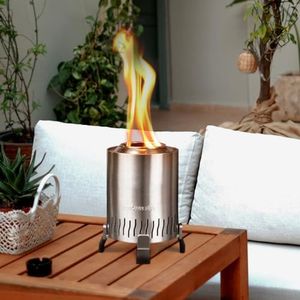We Use CookiesWe use cookies to enhance the security, performance,
functionality and for analytical and promotional activities. By continuing to browse this site you
are agreeing to our privacy policy
10 Best Tabletop Fire Pits
From leading brands and best sellers available on the web.Buying Guide for the Best Tabletop Fire Pits
Tabletop fire pits bring warmth, ambiance, and style to your indoor or outdoor spaces. Choosing the right one depends on where you plan to use it, how much heat or light you want, and your preferences for design and convenience. By understanding the essential features, you can find a tabletop fire pit that fits your needs and enhances your gatherings or relaxation moments.Fuel TypeFuel type refers to what powers your fire pit—most commonly gel, propane, bioethanol, or wood. This spec is important because it affects how easy the fire pit is to use, the amount of heat it produces, and its safety. Gel and bioethanol are clean-burning and easy to maintain, making them great for indoor and smaller outdoor settings. Propane gives more heat and is often used outdoors but requires a tank. Wood provides authenticity and crackling sounds but creates smoke and requires more cleanup, so it's usually for outdoor use. Choose the fuel type based on where you plan to place the fire pit and your comfort with refueling or cleanup.
Size and WeightSize and weight determine how much space the fire pit takes up on a table and how easy it is to move. Smaller, lighter models are more portable and better suited for small balconies or compact tables, while larger, heavier fire pits create a bigger visual impact but need more space and may be left in one place. Think about the size of your table or area, the number of people you want to gather around, and whether you want to move the fire pit often.
Heat OutputHeat output, usually measured in BTUs (British Thermal Units), tells you how much warmth the fire pit can produce. This spec is important if you want the fire pit to serve as a source of heat, not just decoration. Lower output (under 5,000 BTU) provides a gentle, cozy flame, best for ambiance. Medium (5,000-10,000 BTU) can keep a couple of people warm nearby. Higher output (over 10,000 BTU) is suitable for cooler nights or a small group. Match the heat output to your climate and how you want to use the fire pit.
Safety FeaturesSafety features are built-in measures like flame guards, secure bases, and automatic shutoff systems that prevent accidents. Their importance can't be overstated, especially on tables or in areas with kids or pets. Some fire pits have glass wind guards, others have non-slip bases or protective lids. Look for features that fit your setting and give you peace of mind, especially if you’ll be using the fire pit indoors or around young family members.
Material and FinishThe material and finish affect the fire pit’s durability, appearance, and how easy it is to clean. Options include metals like stainless steel or aluminum (resistant to rust and heat), ceramic, glass, and stone composites. Metal models are long-lasting and modern-looking; ceramic or stone blends feel more natural but may be heavier or need more care. Consider the weather exposure if it's for outside, and pick a material and look that complements your table and decor style.
Ease of IgnitionEase of ignition means how simple it is to light and extinguish the fire. Some models need matches or lighters, while others offer push-button or electronic ignition. This matters if you want fuss-free operation, especially if you’ll light it often or want to avoid handling open flames directly. Decide how much convenience you want and whether you'll value a quick, reliable start.
Burn TimeBurn time indicates how long the fire pit can run before needing more fuel. It depends on the fuel type and reservoir size. Longer burn times (2 hours or more) are ideal for parties or long evenings, while shorter ones might be fine for quick ambiance. If you want uninterrupted warmth or glow, check this spec to avoid constant refilling.
